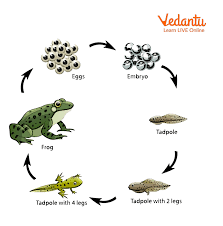Living Creatures Class 6 important questions with answers PDF download
FAQs on CBSE Important Questions for Class 6 Science Living Creatures - 2025-26
1. What types of important questions for Class 6 Science Chapter 10 are provided here for the 2025-26 exams?
This page provides a curated list of important questions for CBSE Class 6 Science Chapter 10, focusing on the 2025-26 syllabus. You will find a mix of:
Frequently asked questions on core concepts like characteristics of life.
Higher-Order Thinking Skills (HOTS) questions that test application and analysis.
Questions based on exam trends, covering topics like adaptation and habitats which often carry higher marks.
2. List five key characteristics of living organisms that are frequently asked in exams.
Based on the CBSE pattern, five key characteristics of living organisms essential for exams are:
Growth: All living beings grow from a smaller to a larger size over time.
Respiration: The process of taking in oxygen and releasing carbon dioxide to produce energy.
Response to stimuli: Reacting to changes in the environment, like a plant growing towards sunlight.
Excretion: The removal of waste products from the body.
Reproduction: The ability to produce offspring of their own kind, ensuring the continuation of the species.
3. How would you differentiate between plants and animals based on their movement and mode of nutrition?
For a 3-mark question, you can differentiate between plants and animals as follows:
Movement: Most animals exhibit locomotion (moving from one place to another) in search of food and shelter. Plants are generally fixed to the soil and show movement in parts, like leaves turning towards the sun, but do not perform locomotion.
Mode of Nutrition: Plants are autotrophs, meaning they produce their own food through photosynthesis using sunlight, water, and carbon dioxide. Animals are heterotrophs; they cannot make their own food and depend on plants or other animals for energy.
4. Why is adaptation considered a crucial factor for the survival of an organism in its habitat?
Adaptation is crucial because it involves the development of specific features that allow an organism to cope with the challenges of its environment. Without these specialised traits, the organism would struggle to find food, protect itself from predators, and withstand climatic conditions. For example, a camel's long eyelashes and ability to close its nostrils are adaptations that protect it from sandstorms, which is essential for survival in its desert habitat. These features directly increase its chances of survival and reproduction.
5. A car moves and uses energy (fuel). Why is it not considered a living thing?
This is a common HOTS question. While a car shows movement and uses energy like living things, it is non-living because it does not exhibit all the essential characteristics of life. A car cannot:
Grow on its own.
Reproduce to make more cars.
Respire by breathing.
Excrete waste products.
Respond to stimuli without human control.
To be classified as living, an entity must display all these life processes.
6. Which topics from Chapter 10, 'Living Creatures', generally hold high marks weightage in exams?
For the CBSE Class 6 exams, the topics with expected high weightage from this chapter are:
Adaptations in different habitats: Questions comparing adaptations of animals and plants in desert, mountain, and aquatic habitats are very common.
Characteristics of Living Organisms: Expect questions that ask you to list and explain multiple characteristics with examples.
Difference between Biotic and Abiotic components: This is a foundational concept that is frequently tested.
Focusing on these areas is a good strategy for scoring well.
7. Compare the key adaptations of a fish and a cactus that help them thrive in their respective habitats.
This is a high-value comparative question. A fish (aquatic habitat) and a cactus (desert habitat) have distinct adaptations:
Fish (Aquatic): It has a streamlined body to reduce water resistance, gills to breathe dissolved oxygen in water, and fins for movement and balance. These features are essential for life in water.
Cactus (Desert): Its leaves are modified into spines to reduce water loss through transpiration and protect it from animals. It has a thick, waxy stem to store water and deep roots to absorb underground water. These adaptations are vital for surviving in a hot, dry environment.
8. Explain the importance of excretion as a life process with an example.
Excretion is a vital life process because all living organisms produce waste materials during metabolic activities like respiration and digestion. The accumulation of these waste products can be toxic and harmful to the body. Therefore, excretion is the essential process of removing these wastes. For example, humans excrete urea, carbon dioxide, and excess salts through urine, sweat, and breathing. If these wastes were not removed, they would poison our cells and disrupt bodily functions.



















